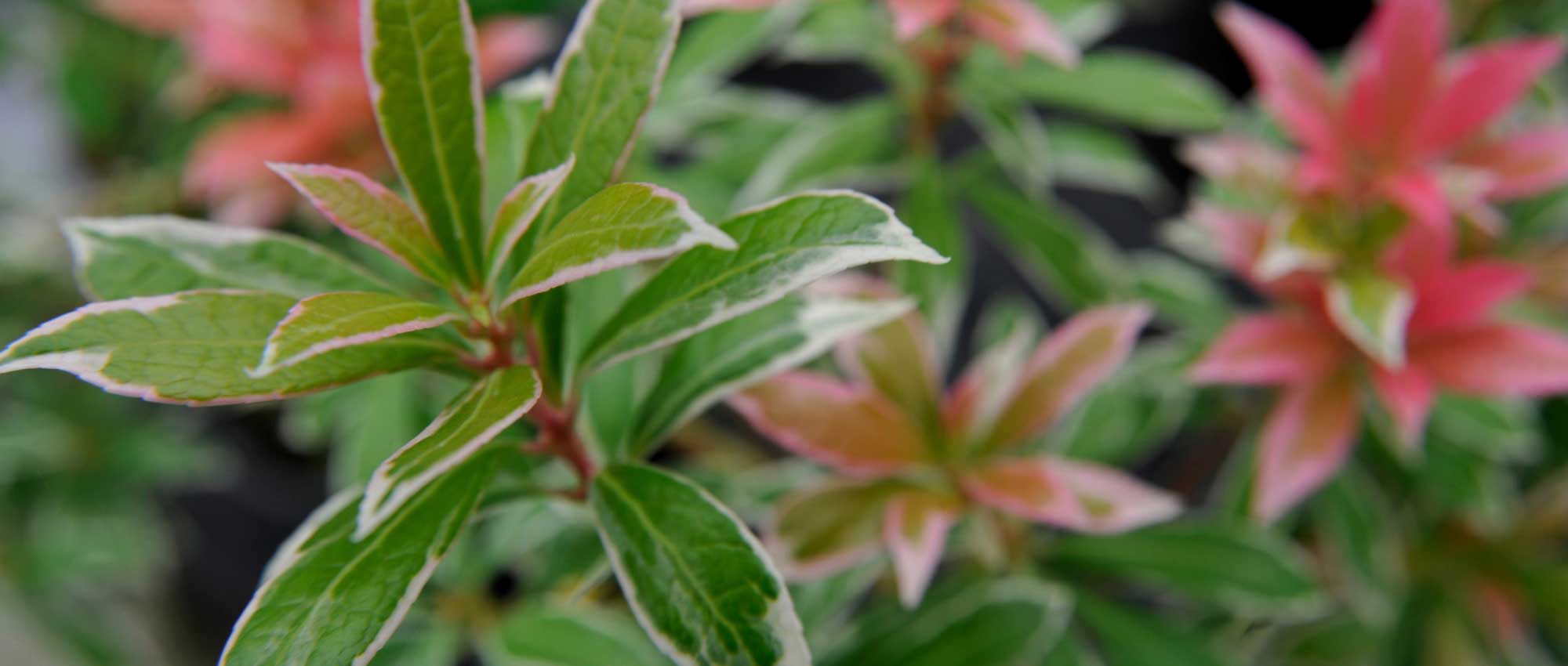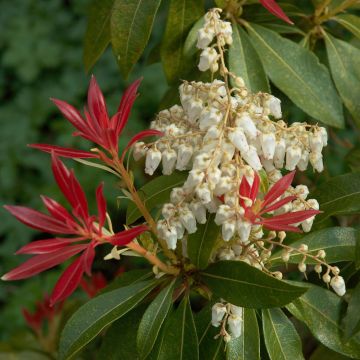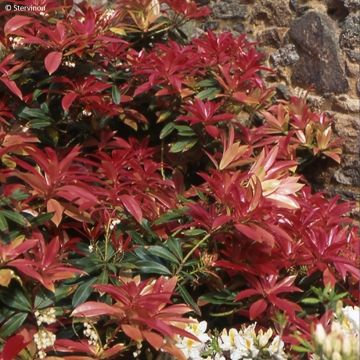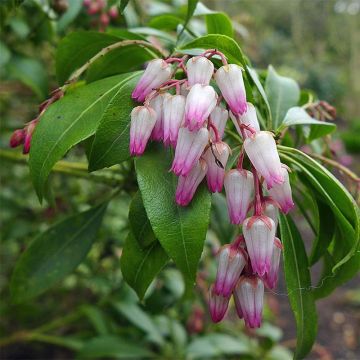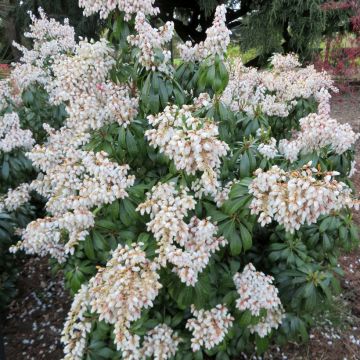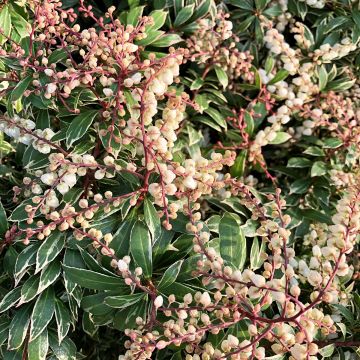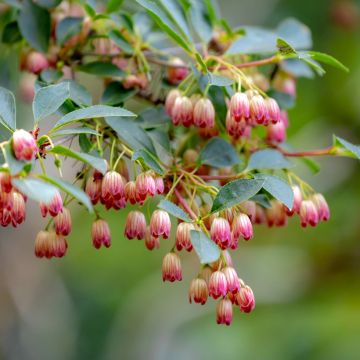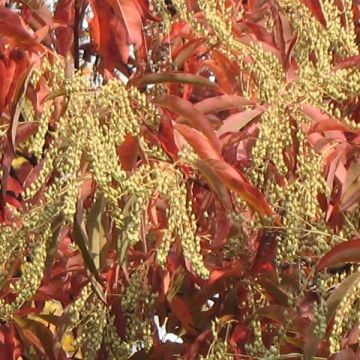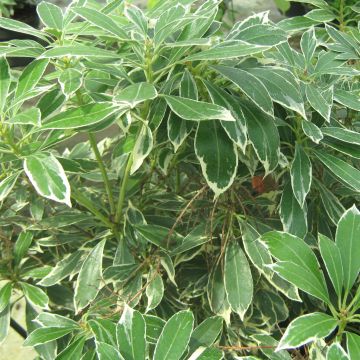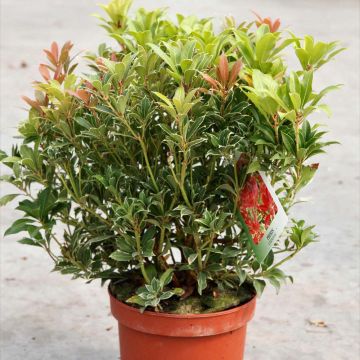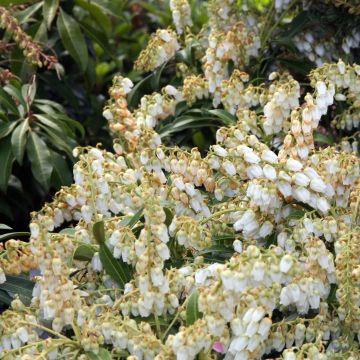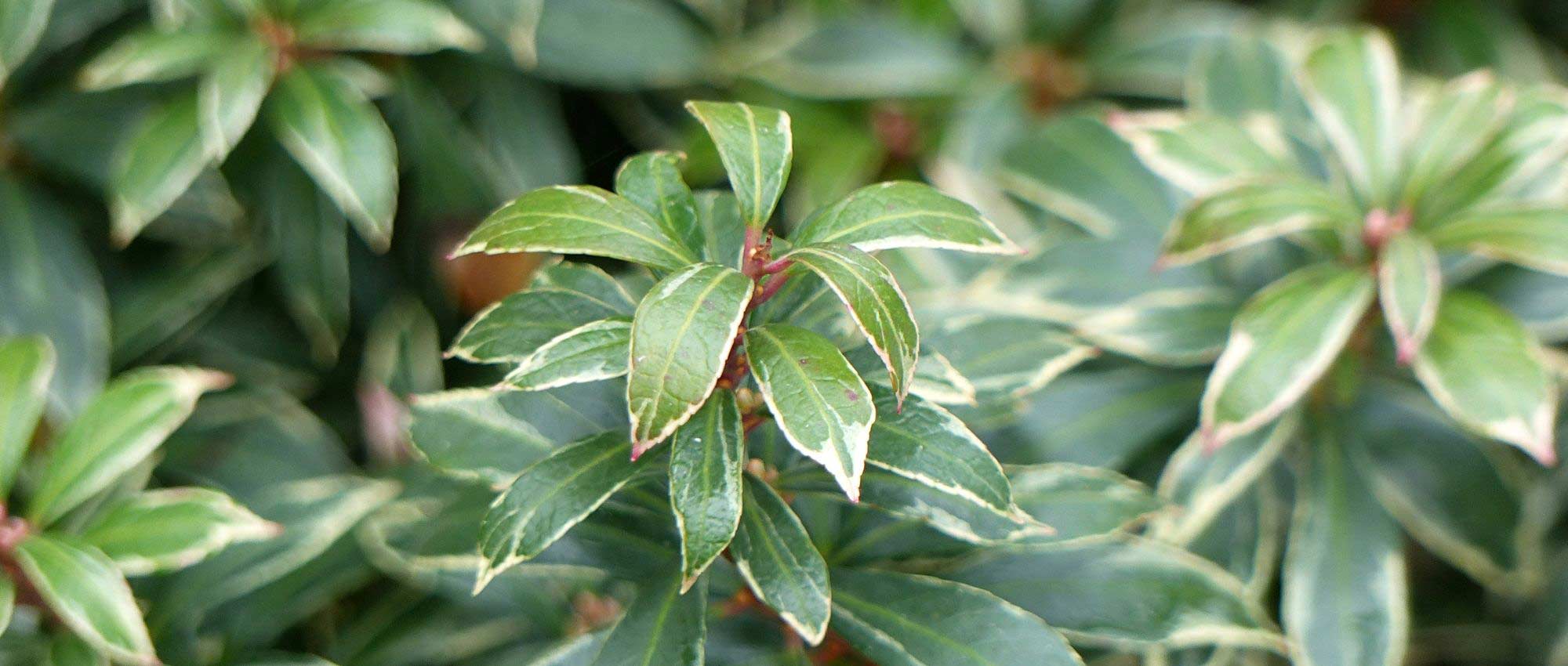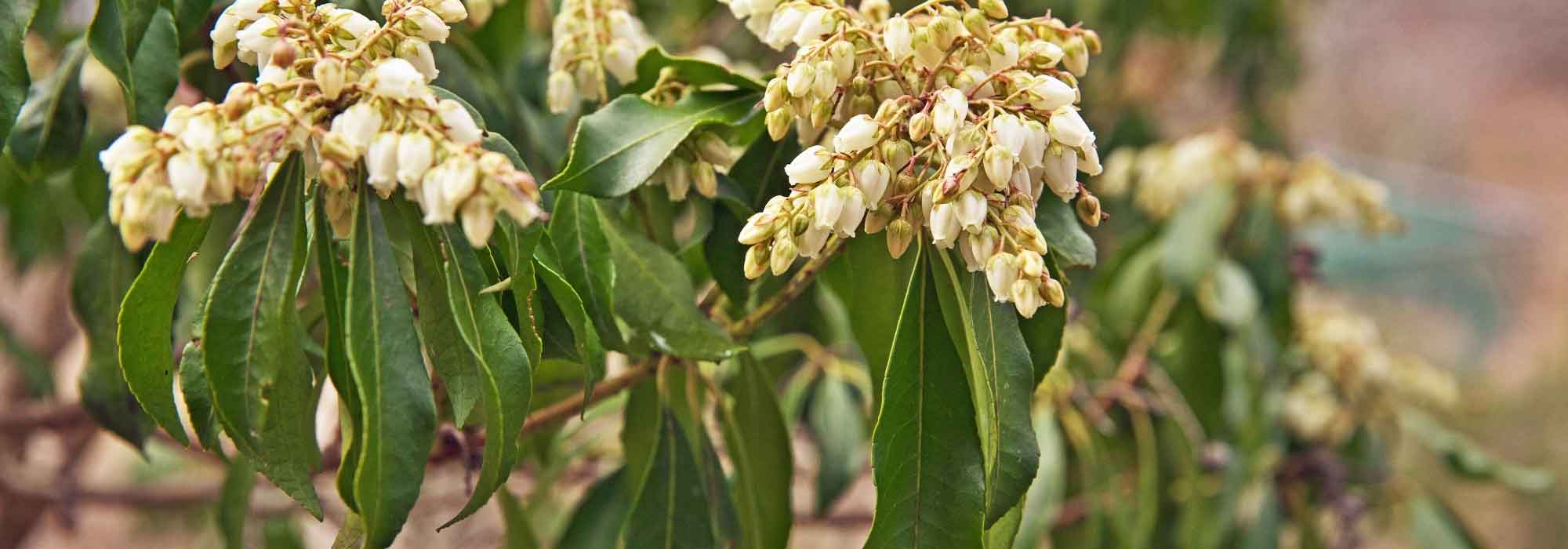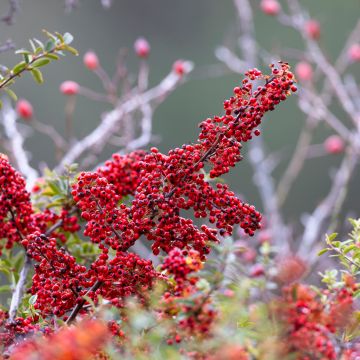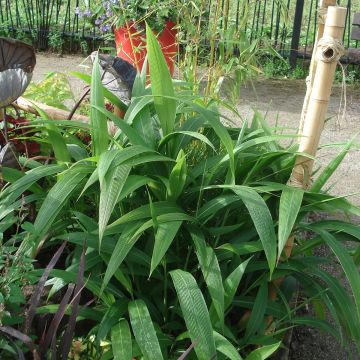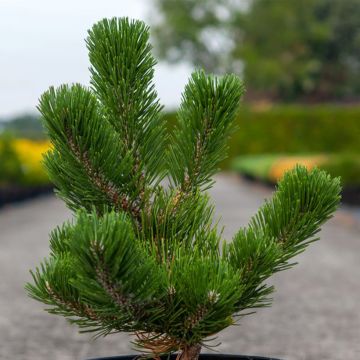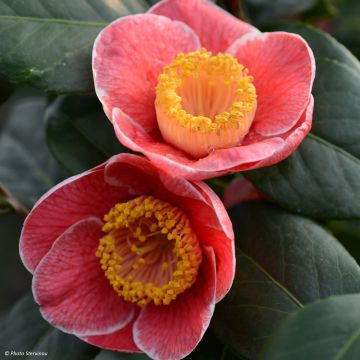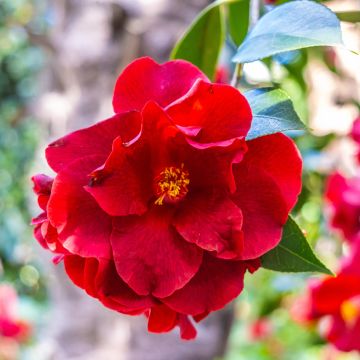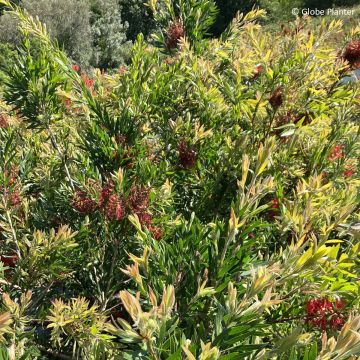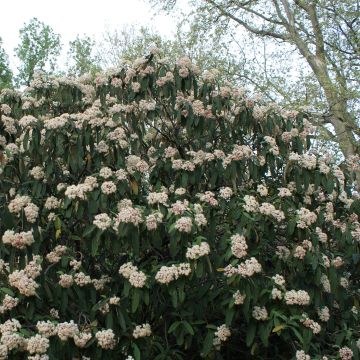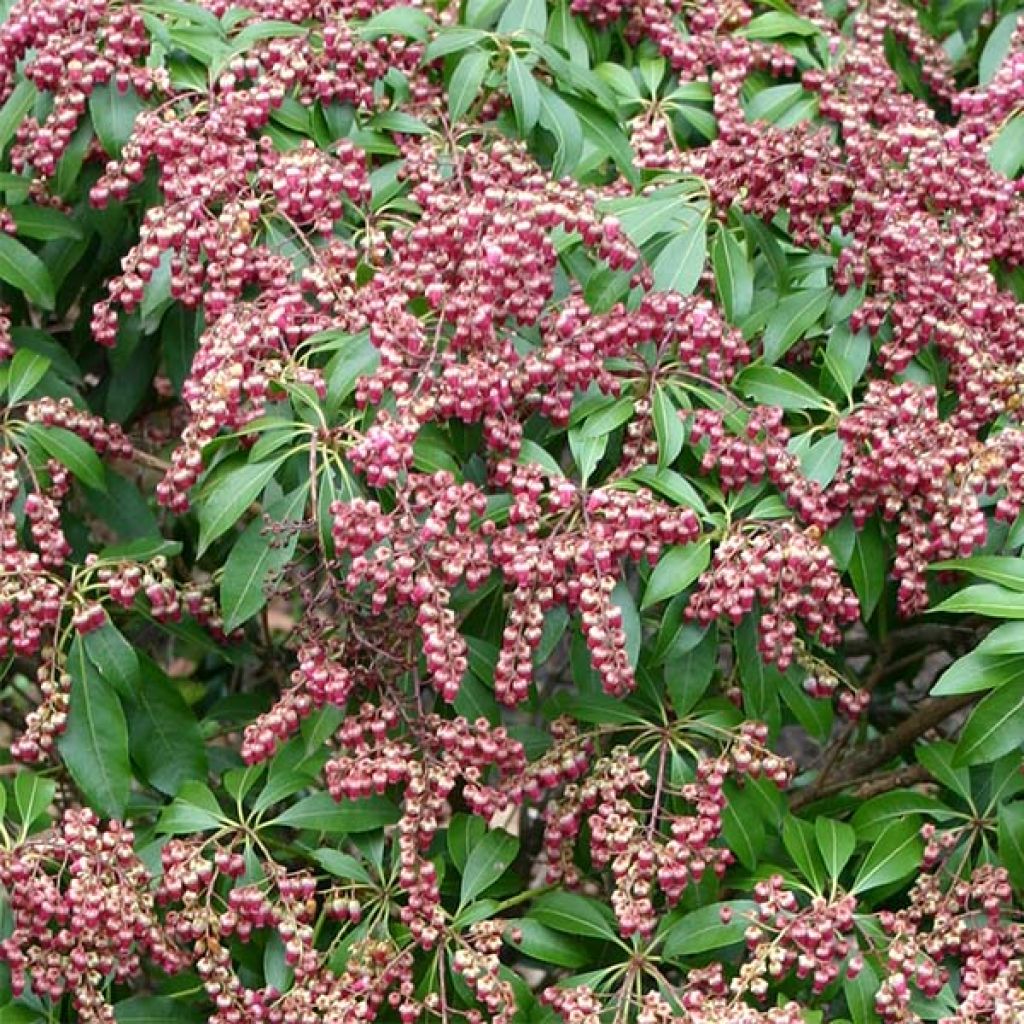

Japanese Andromeda - Pieris Japonica Valley Valentine
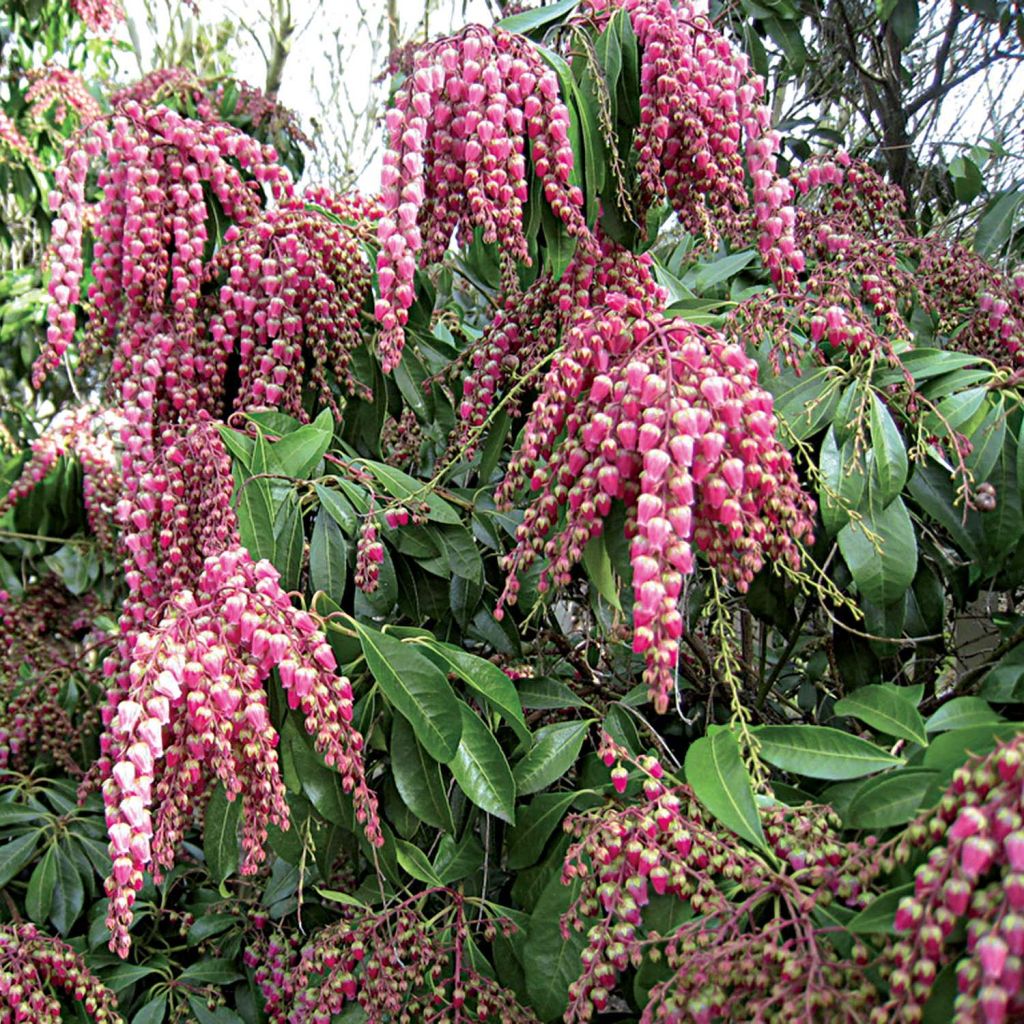

Japanese Andromeda - Pieris Japonica Valley Valentine
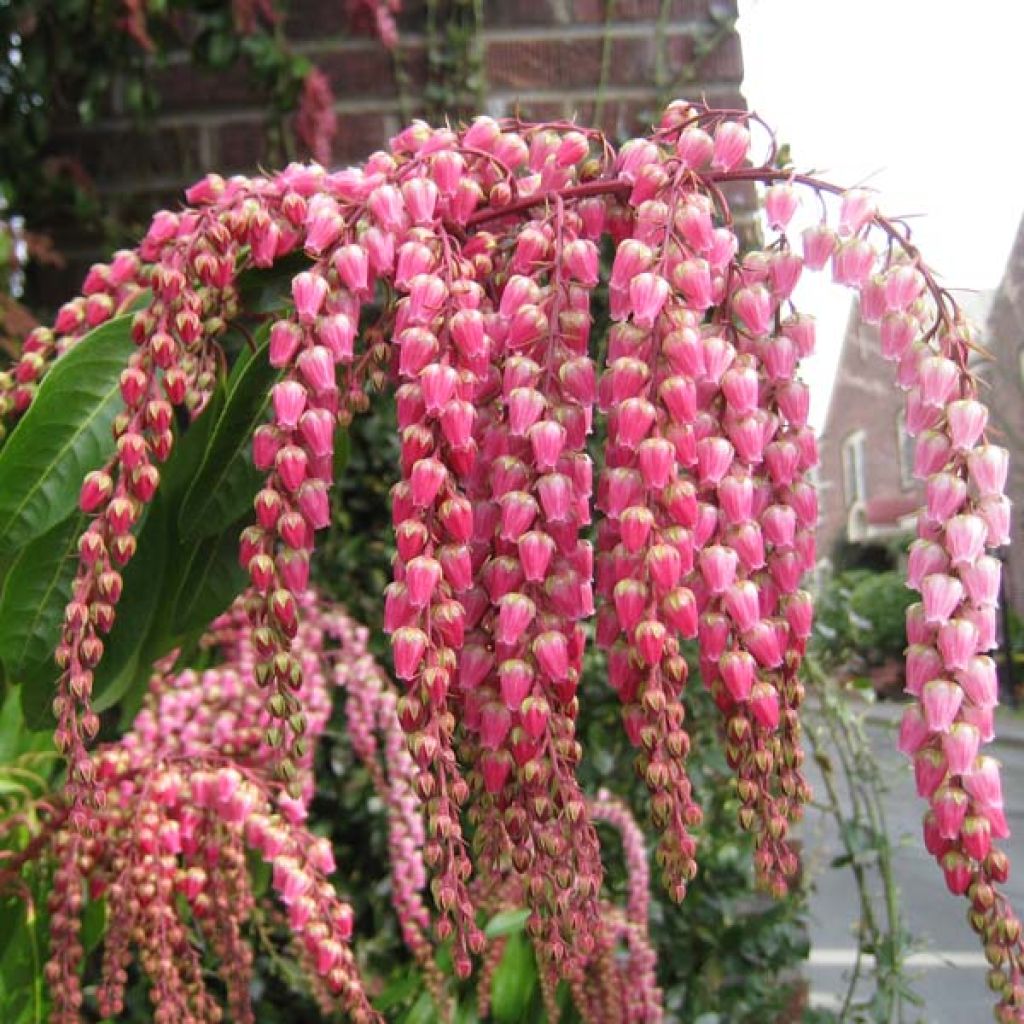

Japanese Andromeda - Pieris Japonica Valley Valentine
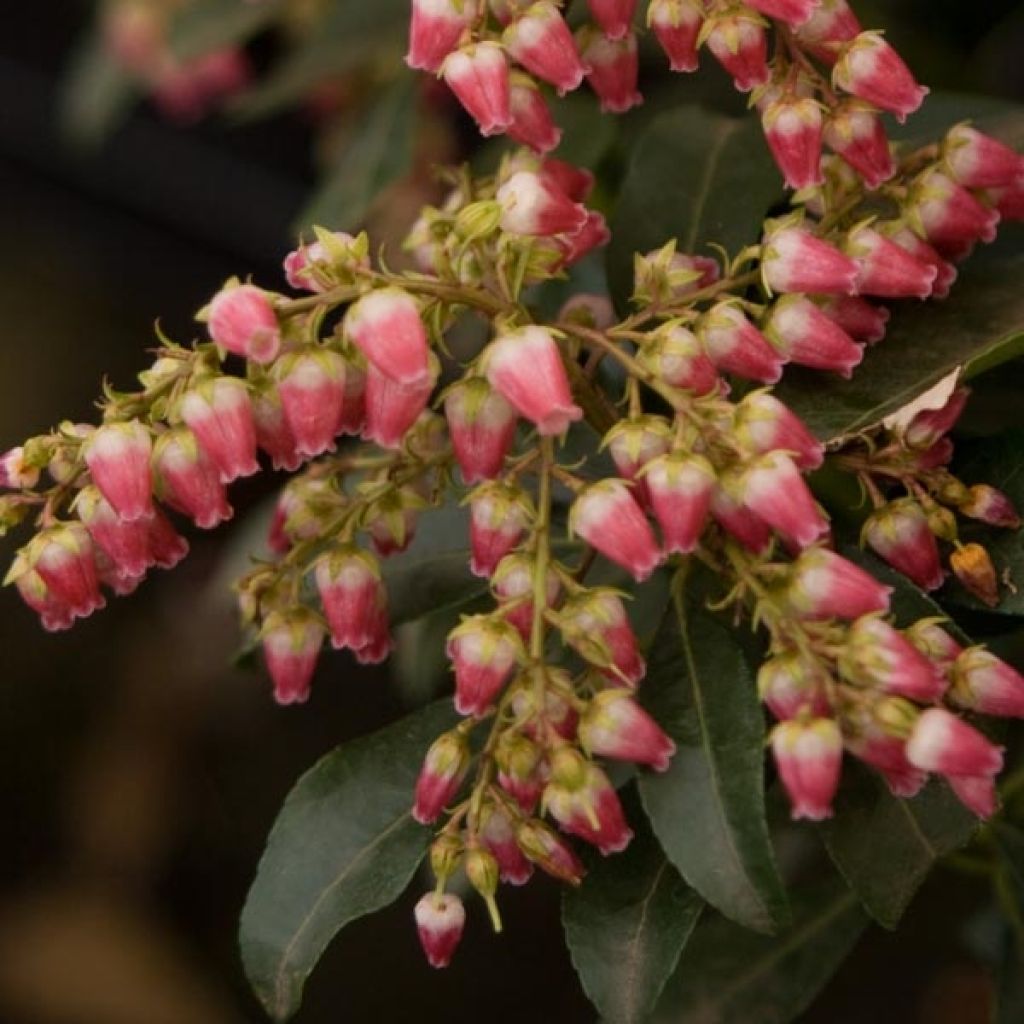

Japanese Andromeda - Pieris Japonica Valley Valentine
Japanese Andromeda - Pieris Japonica Valley Valentine
Pieris japonica Valley Valentine
Japanese Andromeda, Japanese Pieris, Lily-of-the-Valley Bush
It has been 4 years since I bought this Pieris, arrived in good condition, it has taken well and flowered in the second year, then 50% of the young plant dried up without any signs of disease, I cut it off, the other part has flowered very little last year and the plant measures about 25 cm (10in) in height! The plant does not grow, in short, a big disappointment! I will try to move it to see the reaction...
Patrice, 17/04/2023
Special offer!
Receive a €20 voucher for any order over €90 (excluding delivery costs, credit notes, and plastic-free options)!
1- Add your favorite plants to your cart.
2- Once you have reached €90, confirm your order (you can even choose the delivery date!).
3- As soon as your order is shipped, you will receive an email containing your voucher code, valid for 3 months (90 days).
Your voucher is unique and can only be used once, for any order with a minimum value of €20, excluding delivery costs.
Can be combined with other current offers, non-divisible and non-refundable.
Home or relay delivery (depending on size and destination)
Schedule delivery date,
and select date in basket
This plant carries a 24 months recovery warranty
More information
We guarantee the quality of our plants for a full growing cycle, and will replace at our expense any plant that fails to recover under normal climatic and planting conditions.

Would this plant suit my garden?
Set up your Plantfit profile →
Description
The Pieris japonica 'Valley Valentine' is a variety of Japanese Andromeda that is interesting for its almost red flowering, a colour rarely seen in these bushes. It appears early in spring in the form of abundant, beautiful, pendulous clusters of dark pink flowers, highlighted by glossy dark green foliage. This is preceded by young shoots in shades of red and pink that are as decorative as the flowering. Interesting all year round, small in size, this evergreen bush is particularly well suited to container cultivation and small gardens. By illuminating the semi-shaded areas of the garden or terrace, this Andromeda offers a charming and colourful spectacle throughout the year!
Pieris japonica, commonly known as Japanese Andromeda, is native to eastern China, Japan, and Taiwan. It belongs to the Ericaceae family. The cultivar 'Valley Valentine' was bred in 1972 in the United States by Dr. Robert L. Ticknor. Since then, it has been very successful thanks to its uncommon cascades of pink-red flowers, earning it the prestigious RHS Award of Garden Merit. It has a rather slow growth rate, eventually forming a dense and compact rounded bush, measuring on average 1.20m (3.3ft) in height and 1m (3.3ft) in width. It has beautiful evergreen foliage, composed of long, shiny, lanceolate, pointed leaves, slightly dentate along the edges, measuring up to 10cm (3.9in) long. The young shoots are coppery red in colour, then the leaves turn dark green. The clusters of flower buds, dark pink tinged with white at the base, appear from early winter, enhancing the decorative effect of this Japanese Andromeda during a dull season. In March-April, it is covered with a multitude of pendulous clusters, 10 to 15cm (5.9in) long, composed of delicate bell-shaped flowers, purple-pink in colour, resembling lily-of-the-valley flowers. The flowers exude a sweet honey scent.
Pieris japonica is a hardy shrub, loving acidic and moist soils, and semi-shaded exposure. Due to its compact growth and extremely decorative appearance throughout the seasons, this 'Valley Valentine' Japanese Andromeda is perfectly suited for container cultivation, on a semi-shaded terrace, patio, or balcony. It will also work under the cover of large trees, along partially shaded shrubs, as a low hedge, in a shaded rock garden, and in a bed of acid-loving shrubs, with plants such as Camellias, Rhododendrons and Azaleas, Nandina, etc. With its generous and colourful flowering, it will be sensational when combined with spring bulbs. This Japanese Andromeda will be a beautiful ally to animate the garden throughout the year, even in winter. It has its rightful place in a Japanese-style garden!
Japanese Andromeda - Pieris Japonica Valley Valentine in pictures
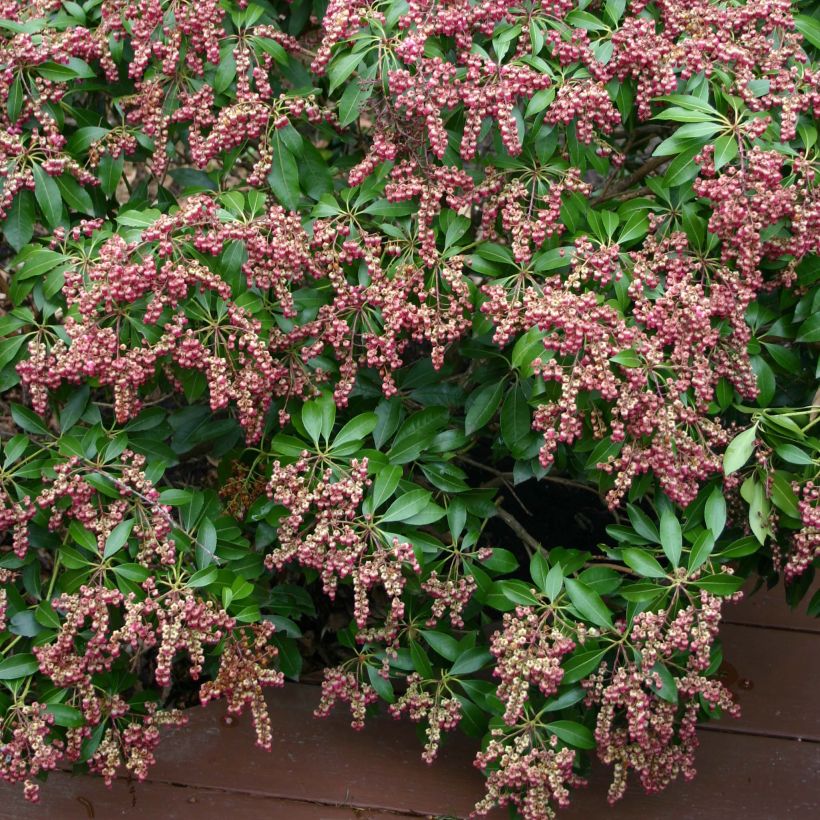

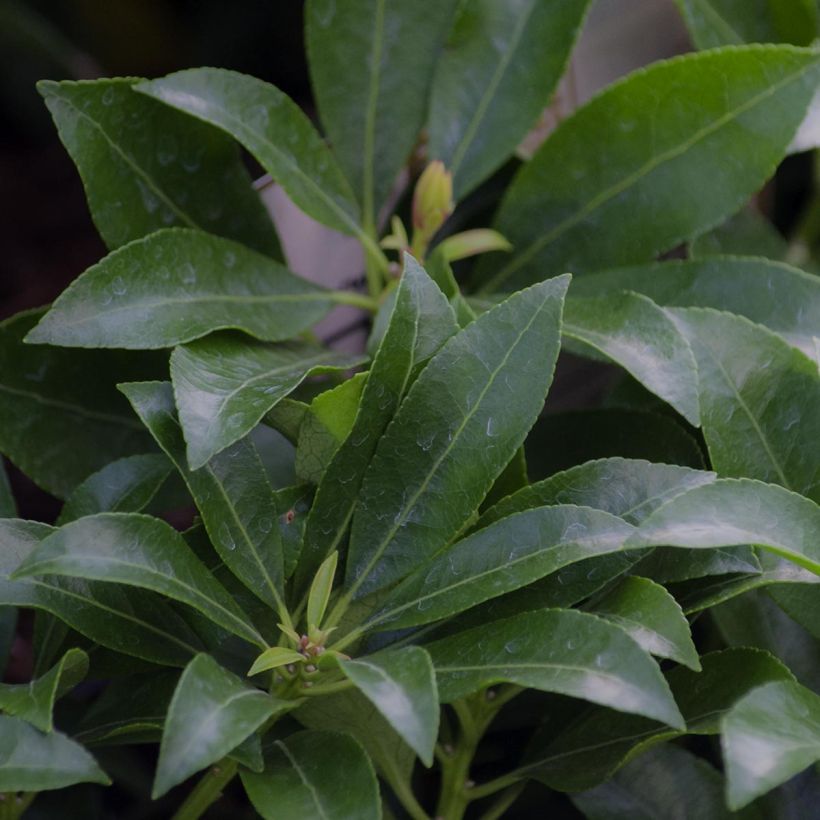

Plant habit
Flowering
Foliage
Botanical data
Pieris
japonica
Valley Valentine
Ericaceae
Japanese Andromeda, Japanese Pieris, Lily-of-the-Valley Bush
Cultivar or hybrid
Other Pieris
View all →Planting and care
The Pieris japonica 'Valley Valentine' appreciates a semi-shaded exposure or gentle sunlight, and acidic, cool, light, humus-bearing and well-drained soil. With good hardiness, it can withstand temperatures down to -15°C (5°F) in well-drained soil, but its young shoots can be damaged by late frosts. It is advisable to plant it in a sheltered location, protected from cold and drying winter winds. Install a thick layer of fern fronds, dead leaves, and pine needles at its base in autumn in harsh climates or in situations exposed to winter winds. If its young foliage has been damaged by frost, it should be pruned to stimulate the growth of new shoots. Preferring good humidity, it thrives in consistently moist soil but not in the stagnant moisture of clay soils. To prevent soil from drying out, regular watering with non-chalky water is necessary, especially during the first year after planting and in the summer. Planting can be done in spring or autumn, in a mixture of garden soil, organic matter and ericaceous soil. In spring, it is recommended to apply a top dressing of ericaceous soil and compost around its roots and possibly provide a base organic fertilizer. Take care to provide enough space for this Pieris japonica to ensure its proper development, respecting a planting distance of 70cm (2.2ft) to 1m (3.3ft) around its base. Remove faded flowers to avoid unnecessarily exhausting the plant with seed production. Also lightly prune bare branches that compromise the bushy habit of the Pieris japonica.
Planting period
Intended location
Care
Planting & care advice
-
, onOrder confirmed
Reply from on Promesse de fleurs
Similar products
Haven't found what you were looking for?
Hardiness is the lowest winter temperature a plant can endure without suffering serious damage or even dying. However, hardiness is affected by location (a sheltered area, such as a patio), protection (winter cover) and soil type (hardiness is improved by well-drained soil).

Photo Sharing Terms & Conditions
In order to encourage gardeners to interact and share their experiences, Promesse de fleurs offers various media enabling content to be uploaded onto its Site - in particular via the ‘Photo sharing’ module.
The User agrees to refrain from:
- Posting any content that is illegal, prejudicial, insulting, racist, inciteful to hatred, revisionist, contrary to public decency, that infringes on privacy or on the privacy rights of third parties, in particular the publicity rights of persons and goods, intellectual property rights, or the right to privacy.
- Submitting content on behalf of a third party;
- Impersonate the identity of a third party and/or publish any personal information about a third party;
In general, the User undertakes to refrain from any unethical behaviour.
All Content (in particular text, comments, files, images, photos, videos, creative works, etc.), which may be subject to property or intellectual property rights, image or other private rights, shall remain the property of the User, subject to the limited rights granted by the terms of the licence granted by Promesse de fleurs as stated below. Users are at liberty to publish or not to publish such Content on the Site, notably via the ‘Photo Sharing’ facility, and accept that this Content shall be made public and freely accessible, notably on the Internet.
Users further acknowledge, undertake to have ,and guarantee that they hold all necessary rights and permissions to publish such material on the Site, in particular with regard to the legislation in force pertaining to any privacy, property, intellectual property, image, or contractual rights, or rights of any other nature. By publishing such Content on the Site, Users acknowledge accepting full liability as publishers of the Content within the meaning of the law, and grant Promesse de fleurs, free of charge, an inclusive, worldwide licence for the said Content for the entire duration of its publication, including all reproduction, representation, up/downloading, displaying, performing, transmission, and storage rights.
Users also grant permission for their name to be linked to the Content and accept that this link may not always be made available.
By engaging in posting material, Users consent to their Content becoming automatically accessible on the Internet, in particular on other sites and/or blogs and/or web pages of the Promesse de fleurs site, including in particular social pages and the Promesse de fleurs catalogue.
Users may secure the removal of entrusted content free of charge by issuing a simple request via our contact form.
The flowering period indicated on our website applies to countries and regions located in USDA zone 8 (France, the United Kingdom, Ireland, the Netherlands, etc.)
It will vary according to where you live:
- In zones 9 to 10 (Italy, Spain, Greece, etc.), flowering will occur about 2 to 4 weeks earlier.
- In zones 6 to 7 (Germany, Poland, Slovenia, and lower mountainous regions), flowering will be delayed by 2 to 3 weeks.
- In zone 5 (Central Europe, Scandinavia), blooming will be delayed by 3 to 5 weeks.
In temperate climates, pruning of spring-flowering shrubs (forsythia, spireas, etc.) should be done just after flowering.
Pruning of summer-flowering shrubs (Indian Lilac, Perovskia, etc.) can be done in winter or spring.
In cold regions as well as with frost-sensitive plants, avoid pruning too early when severe frosts may still occur.
The planting period indicated on our website applies to countries and regions located in USDA zone 8 (France, United Kingdom, Ireland, Netherlands).
It will vary according to where you live:
- In Mediterranean zones (Marseille, Madrid, Milan, etc.), autumn and winter are the best planting periods.
- In continental zones (Strasbourg, Munich, Vienna, etc.), delay planting by 2 to 3 weeks in spring and bring it forward by 2 to 4 weeks in autumn.
- In mountainous regions (the Alps, Pyrenees, Carpathians, etc.), it is best to plant in late spring (May-June) or late summer (August-September).
The harvesting period indicated on our website applies to countries and regions in USDA zone 8 (France, England, Ireland, the Netherlands).
In colder areas (Scandinavia, Poland, Austria...) fruit and vegetable harvests are likely to be delayed by 3-4 weeks.
In warmer areas (Italy, Spain, Greece, etc.), harvesting will probably take place earlier, depending on weather conditions.
The sowing periods indicated on our website apply to countries and regions within USDA Zone 8 (France, UK, Ireland, Netherlands).
In colder areas (Scandinavia, Poland, Austria...), delay any outdoor sowing by 3-4 weeks, or sow under glass.
In warmer climes (Italy, Spain, Greece, etc.), bring outdoor sowing forward by a few weeks.






























